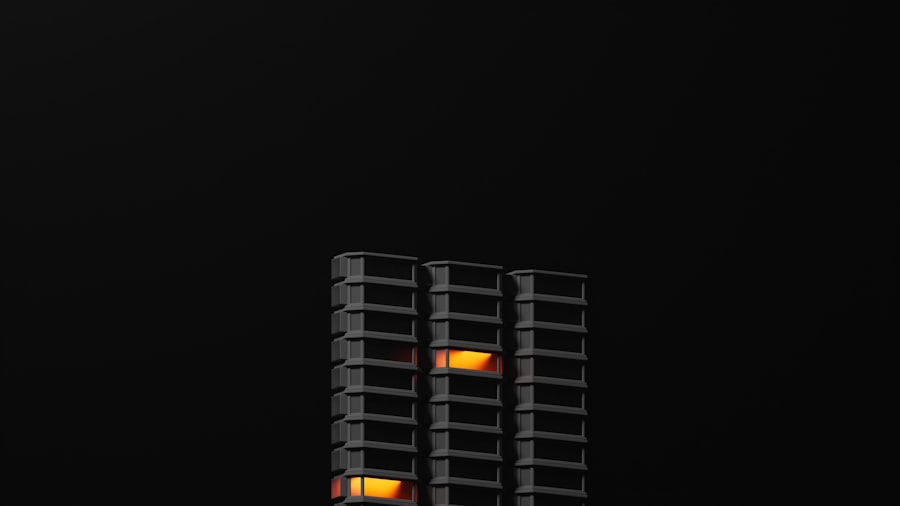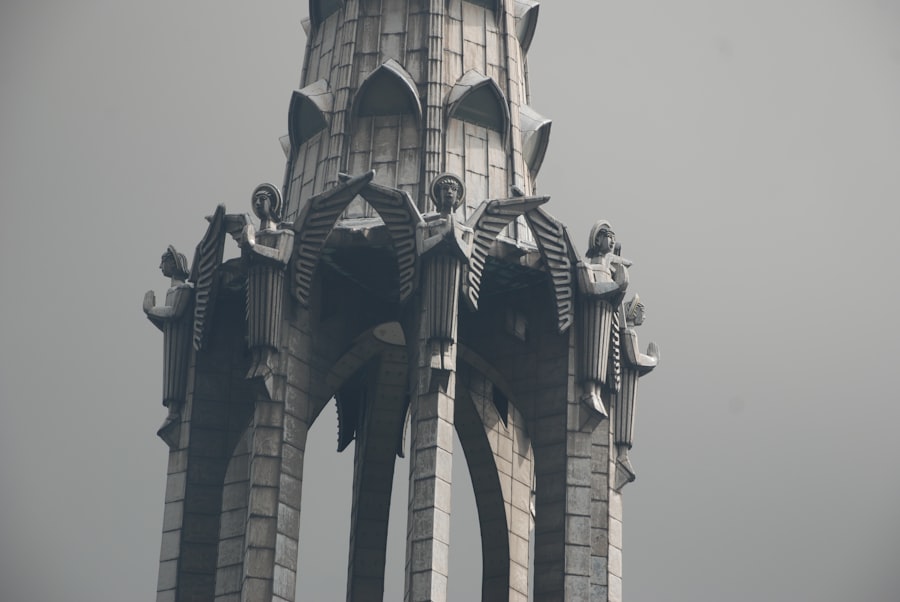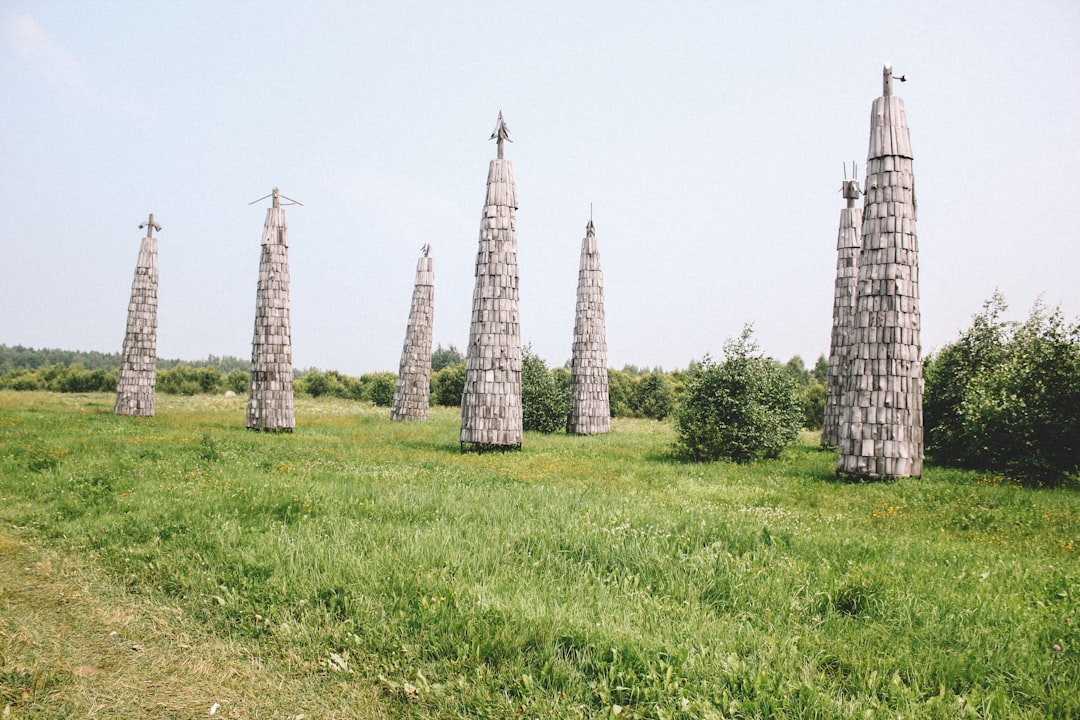New York City, a bustling metropolis known for its iconic skyline and vibrant culture, is also home to a collection of abandoned structures often referred to as “ghost towers.” These buildings, once symbols of ambition and progress, now stand as haunting reminders of the city’s complex history. Many of these towers were constructed during periods of economic boom, only to be left vacant due to financial downturns, changing urban landscapes, or shifts in societal needs. The stories behind these ghostly edifices are as varied as the architectural styles they embody, ranging from grandiose skyscrapers to modest residential buildings.
The origins of these ghost towers can often be traced back to the early 20th century when New York City experienced rapid growth and development. Many ambitious projects were initiated, fueled by the promise of prosperity and the allure of urban living. However, as the economy fluctuated and the needs of the city evolved, several of these projects were abandoned mid-construction or fell into disrepair.
The once-promising structures became relics of unfulfilled dreams, their skeletal frames looming over the city like specters of a bygone era. This juxtaposition of ambition and abandonment has given rise to a rich tapestry of narratives surrounding these ghost towers, each with its own unique tale to tell.
Key Takeaways
- The history of NYC’s ghost towers is shrouded in mystery, with abandoned buildings holding secrets of the past.
- Eerie sightings and hauntings have been reported in the abandoned buildings, adding to their mysterious reputation.
- Urban legends and myths surround the ghost towers, contributing to their allure and intrigue.
- The architectural significance of the abandoned structures adds to their cultural and historical value.
- The economic and social impact of the ghost towers on NYC has sparked efforts to revitalize and repurpose the haunted buildings.
The Eerie Sightings and Hauntings in the Abandoned Buildings
As dusk falls over New York City, the ghost towers take on an even more sinister aura. Numerous accounts of eerie sightings and unexplained phenomena have emerged from these abandoned buildings, drawing the attention of both curious locals and paranormal enthusiasts alike. Witnesses have reported strange noises echoing through empty hallways, flickering lights in windows long devoid of life, and even shadowy figures darting across crumbling facades.
These experiences have contributed to the growing legend of the ghost towers as sites of supernatural activity.
John’s Hospital in Brooklyn, where staff and visitors have claimed to hear disembodied voices and footsteps in the dead of night.
The building’s history as a medical facility adds an unsettling layer to its haunting reputation, with many believing that the spirits of former patients linger within its walls. Similarly, the remnants of the old Domino Sugar Factory have become a focal point for ghost hunters, who report feeling an inexplicable chill in the air and witnessing apparitions that seem to materialize from the shadows. Such accounts not only fuel local lore but also spark interest in exploring the deeper mysteries that these ghost towers hold.
Urban Legends and Myths Surrounding the Ghost Towers

The ghost towers of New York City are steeped in urban legends and myths that have been passed down through generations. These stories often blend fact with fiction, creating a rich narrative tapestry that captivates the imagination. One popular legend involves a long-abandoned hotel that supposedly housed a secret society in its heyday.
According to local lore, members of this clandestine group conducted rituals in the building’s upper floors, leaving behind an energy that continues to haunt the structure to this day. Another myth revolves around a ghostly figure said to roam the halls of an old office building in Manhattan. Dubbed “The Lady in White,” this apparition is believed to be the spirit of a former employee who met an untimely demise within the building.
Sightings of her ethereal form have become a rite of passage for urban explorers, who venture into the tower hoping for a glimpse of her spectral presence. These urban legends not only add an element of intrigue to the ghost towers but also serve as a reflection of the city’s collective psyche, illustrating how history and folklore intertwine in the fabric of New York City.
The Architectural Significance of the Abandoned Structures
| Structure | Location | Architectural Style | Year Built | Significance |
|---|---|---|---|---|
| Abandoned Church | New Orleans, Louisiana | Gothic Revival | 1875 | Historical and cultural landmark |
| Derelict Mansion | London, England | Victorian | 1890 | Exemplifies grandeur of the era |
| Decaying Factory | Detroit, Michigan | Industrial | 1920 | Symbol of the city’s industrial past |
Beyond their haunting reputations, the ghost towers also possess significant architectural value. Many of these structures showcase unique design elements that reflect the historical context in which they were built. From Art Deco skyscrapers to Brutalist concrete monoliths, each tower tells a story through its architectural style.
Preservationists argue that these buildings should be recognized not only for their ghostly associations but also for their contributions to New York City’s architectural heritage. The intricate details found in some ghost towers are often overlooked due to their abandoned status. Ornate facades, grand lobbies, and innovative engineering techniques are just a few examples of what makes these structures noteworthy.
For instance, the old Woolworth Building, once a beacon of commercial success, features stunning Gothic Revival elements that continue to inspire architects today. As discussions about preservation versus demolition continue, advocates emphasize the importance of recognizing and valuing these architectural gems before they are lost forever.
The Economic and Social Impact of the Ghost Towers on NYC
The presence of ghost towers in New York City has far-reaching economic and social implications. These abandoned structures often become blights on their neighborhoods, detracting from property values and discouraging investment in surrounding areas. As they deteriorate over time, they can contribute to urban decay, leading to increased crime rates and a decline in community morale.
Local businesses may suffer as foot traffic diminishes, creating a cycle that is difficult to break. Conversely, some argue that ghost towers can serve as catalysts for revitalization efforts. As urban explorers and artists flock to these sites, they can draw attention to neglected neighborhoods and inspire new development initiatives.
The allure of these abandoned buildings has led to creative projects aimed at repurposing them for modern use, such as art installations or community spaces. By harnessing the unique character of these structures, cities can breathe new life into forgotten areas while preserving their historical significance.
Efforts to Revitalize and Repurpose the Haunted Buildings

In recent years, there has been a growing movement to revitalize and repurpose New York City’s ghost towers. Developers and community organizations are increasingly recognizing the potential these abandoned structures hold for adaptive reuse projects. By transforming these buildings into mixed-use spaces or cultural hubs, they can breathe new life into neighborhoods while preserving their historical integrity.
One notable example is the transformation of an old industrial building into a vibrant arts center that hosts exhibitions, performances, and community events. This approach not only honors the building’s past but also fosters a sense of community engagement and pride among residents. Additionally, efforts to incorporate sustainable design practices into these revitalization projects can help mitigate environmental impacts while enhancing the overall aesthetic appeal of the area.
Ghost Tours and Paranormal Investigations in the Abandoned Towers
The allure of New York City’s ghost towers has given rise to a thriving industry centered around ghost tours and paranormal investigations. Enthusiasts from all walks of life are drawn to these tours, eager to explore the haunted history behind each structure while learning about its architectural significance. Guided by knowledgeable hosts who share chilling tales and local lore, participants embark on journeys through darkened hallways and crumbling staircases.
Paranormal investigations have also gained popularity among those seeking tangible evidence of supernatural activity within these abandoned buildings. Equipped with EMF detectors, infrared cameras, and other specialized equipment, investigators delve into the mysteries surrounding each site. Their findings often spark further interest in the ghost towers, encouraging more people to explore their haunted histories while contributing to ongoing discussions about preservation and revitalization.
The Role of the Ghost Towers in NYC’s Cultural and Artistic Scene
Ghost towers have carved out a unique niche within New York City’s cultural and artistic landscape. Artists often find inspiration in these abandoned spaces, using them as backdrops for photography projects or immersive installations that challenge perceptions of decay and beauty. The juxtaposition between urban exploration and artistic expression creates a dialogue about memory, loss, and renewal that resonates deeply with both creators and audiences alike.
Moreover, some ghost towers have become unofficial canvases for street artists who use their crumbling walls as platforms for social commentary or personal expression. These vibrant murals breathe new life into forgotten spaces while attracting attention from passersby and art enthusiasts alike. As such, ghost towers serve not only as reminders of history but also as catalysts for contemporary artistic movements that seek to engage with urban narratives.
The Future of the Ghost Towers: Preservation or Demolition?
As discussions surrounding New York City’s ghost towers continue to evolve, questions about their future remain at the forefront. Preservationists advocate for maintaining these structures as vital pieces of history that contribute to the city’s identity. They argue that demolishing them would erase important narratives tied to New York’s development while depriving future generations of opportunities for exploration and education.
On the other hand, some stakeholders contend that certain ghost towers may be beyond repair or economically unfeasible to restore. They argue that demolition could pave the way for new developments that better serve contemporary needs while revitalizing struggling neighborhoods. This ongoing debate highlights the complexities involved in balancing historical preservation with urban growth—a challenge faced by many cities grappling with similar issues.
Personal Stories and Experiences of Those Who Have Explored the Ghost Towers
The allure of New York City’s ghost towers has drawn countless adventurers eager to uncover their secrets firsthand. Many urban explorers recount thrilling tales filled with excitement and trepidation as they navigate through darkened hallways and crumbling staircases. Some describe feeling an inexplicable connection to the past while standing amidst remnants of forgotten lives—an experience that transcends mere curiosity.
Others share stories about unexpected encounters during their explorations—moments when they felt an eerie presence or heard whispers echoing through empty rooms. These personal narratives contribute to the growing mythology surrounding these structures while fostering a sense of community among those who share similar interests in urban exploration and history.
The Legacy of the Ghost Towers in NYC’s History and Lore
Ultimately, New York City’s ghost towers represent more than just abandoned buildings; they embody layers upon layers of history, culture, and human experience. Their haunting presence serves as a reminder that every structure carries stories waiting to be told—stories that reflect both triumphs and tragedies woven into the fabric of urban life. As discussions about preservation versus demolition continue, it is essential to recognize the legacy left behind by these ghostly edifices.
They stand not only as monuments to ambition but also as testaments to resilience—the enduring spirit of a city that continues to evolve while honoring its past. Whether through revitalization efforts or artistic expressions inspired by their haunting beauty, New York City’s ghost towers will undoubtedly remain integral parts of its ever-changing narrative for years to come.
In recent years, New York City’s skyline has been increasingly dotted with “ghost towers,” luxury high-rises that remain largely unoccupied, raising concerns about urban planning and housing affordability. These structures, often purchased as investment properties by international buyers, contribute to the city’s housing crisis by keeping potential homes off the market. A related article on this phenomenon can be found on MyGeoQuest, which explores the implications of these empty skyscrapers on the urban landscape and local communities. For more insights, you can read the full article by visiting mygeoquest.
com/sample-page/’>MyGeoQuest’s sample page.
WATCH THIS! The Real Cost of NYC Living: Your Wallet, Sanity, and Subway Survival Skills
FAQs
What are NYC “ghost towers”?
NYC “ghost towers” refer to luxury residential buildings in New York City that are largely unoccupied or have a high number of vacant units.
Why are they called “ghost towers”?
They are called “ghost towers” because despite being high-end luxury buildings, they have a significant number of unoccupied units, giving them a deserted or “ghostly” appearance.
What are some reasons for the high vacancy rates in these buildings?
Some reasons for the high vacancy rates in these buildings include high purchase prices, oversupply of luxury units, economic downturns, and the impact of the COVID-19 pandemic on the real estate market.
How do “ghost towers” impact the NYC real estate market?
“Ghost towers” can impact the NYC real estate market by contributing to oversupply, driving down prices in the luxury segment, and potentially affecting the overall market sentiment and investor confidence.
What are the implications of “ghost towers” for the surrounding neighborhoods?
The presence of “ghost towers” can have implications for the surrounding neighborhoods, such as a lack of community vibrancy, reduced foot traffic for local businesses, and potential negative effects on property values.
